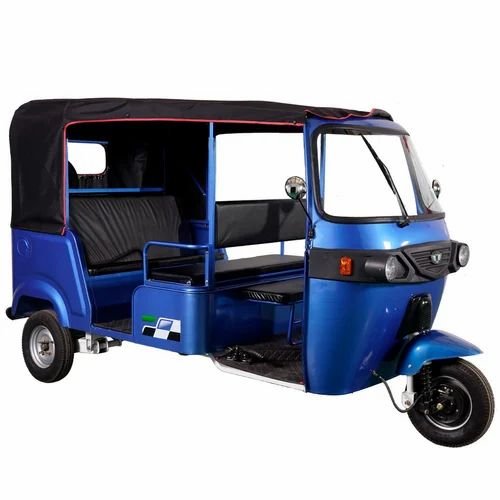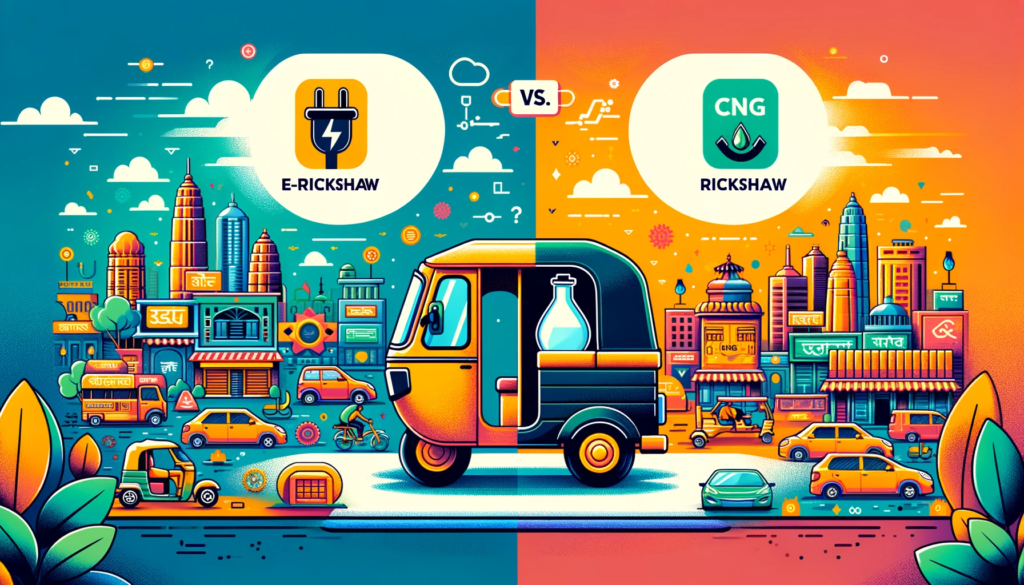India’s transportation landscape is undergoing a significant shift, with electric rickshaws (e-rickshaws) and Compressed Natural Gas (CNG) rickshaws emerging as popular choices in urban and semi-urban areas. This blog delves into the profit margins of these two types of rickshaws, analyzing their average earnings, maintenance, and running costs with recent data.
Initial Investment and Running Costs

E-Rickshaws:
- Initial Cost: E-rickshaws typically cost between INR 1.5 to 2.5 lakhs.
- Running Cost: The electricity cost for charging an e-rickshaw is significantly lower than the cost of CNG for a CNG rickshaw. It costs approximately INR 20-30 for a full charge, offering a range of about 100-120 km.
CNG Rickshaws:

- Initial Cost: CNG rickshaws are slightly more expensive, with prices ranging from INR 2 to 3 lakhs.
- Running Cost: CNG costs vary across cities but are generally higher than the electricity costs for e-rickshaws. A full tank costs around INR 150-200, covering a similar range.
Maintenance and Longevity
- E-Rickshaws: They have fewer moving parts, leading to lower maintenance costs, typically around INR 500-1000 per month.
- CNG Rickshaws: Maintenance costs are higher, averaging INR 1500-2000 per month, due to the complexity of the engine and fuel system.
Average Earnings

Daily Earnings:
- E-Rickshaws: On average, e-rickshaw drivers can earn between INR 700-1000 per day.
- CNG Rickshaws: CNG rickshaw drivers usually earn around INR 800-1200 per day.
Monthly and Annual Earnings:
- E-Rickshaws: Monthly earnings can range from INR 21,000 to 30,000, leading to annual earnings of approximately INR 2.52 to 3.6 lakhs.
- CNG Rickshaws: Monthly earnings are around INR 24,000 to 36,000, resulting in annual earnings of about INR 2.88 to 4.32 lakhs.
Profit Margin Analysis
After deducting the running and maintenance costs:
- E-Rickshaws: The net profit margin for an e-rickshaw driver can be around INR 19,000 to 27,000 per month.
- CNG Rickshaws: The net profit margin ranges from INR 20,000 to 30,000 per month.
Conclusion
While the initial investment in e-rickshaws is slightly lower and they offer the advantage of lower running and maintenance costs, CNG rickshaws can potentially yield higher daily earnings. However, the profitability of each depends significantly on factors like local fare rates, the number of trips per day, and regional fuel/electricity costs.
Here’s a Sample Calculation

E-Rickshaw Profitability Calculation
Initial Investment:
- Cost of E-Rickshaw: INR 2,00,000
Monthly Operating and Maintenance Costs:
- Electricity for Charging: INR 25 per charge x 25 days = INR 625
- Maintenance: INR 800 per month
Monthly Earnings:
- Average Daily Earning: INR 800
- Monthly Earning (800 x 25 days): INR 20,000
Monthly Expenses:
- Running Costs + Maintenance = INR 625 + INR 800 = INR 1,425
Monthly Profit:
- Earnings – Expenses = INR 20,000 – INR 1,425 = INR 18,575
CNG Rickshaw Profitability Calculation
Initial Investment:
- Cost of CNG Rickshaw: INR 2,50,000
Monthly Operating and Maintenance Costs:
- CNG Cost: INR 180 per tank x 25 days = INR 4,500
- Maintenance: INR 1,500 per month
Monthly Earnings:
- Average Daily Earning: INR 1,000
- Monthly Earning (1000 x 25 days): INR 25,000
Monthly Expenses:
- Running Costs + Maintenance = INR 4,500 + INR 1,500 = INR 6,000
Monthly Profit:
- Earnings – Expenses = INR 25,000 – INR 6,000 = INR 19,000
Summary
- E-Rickshaw: The net monthly profit is INR 18,575. The lower operating and maintenance costs contribute to a good profit margin, despite slightly lower daily earnings.
- CNG Rickshaw: The net monthly profit is INR 19,000. Although the daily earnings are higher, the higher fuel and maintenance costs slightly reduce the net profit margin.
In conclusion, while the CNG rickshaw shows a marginally higher profit, the e-rickshaw is not far behind, especially considering its environmental benefits and lower running costs. The decision between the two would depend on the driver’s preferences and local market conditions.



